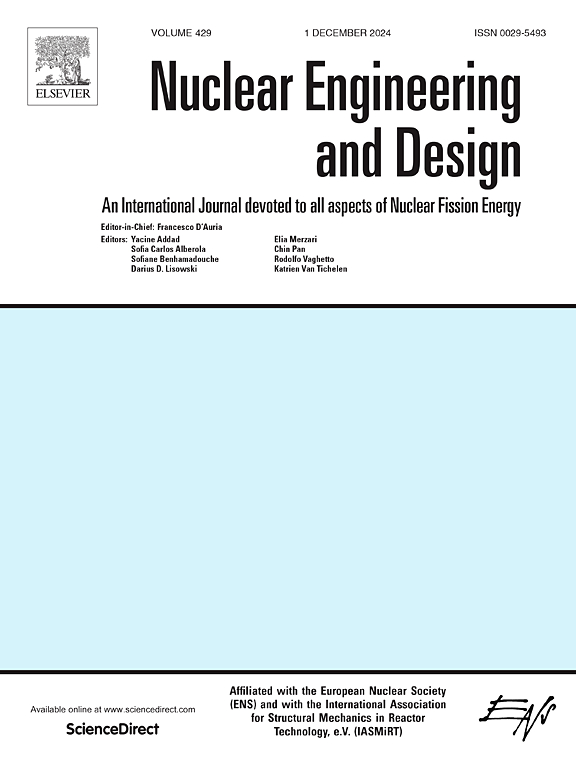Explore the potential advantages of replacing UO2 with different thorium-based fuels in U.S. SCLWR
IF 1.9
3区 工程技术
Q1 NUCLEAR SCIENCE & TECHNOLOGY
引用次数: 0
Abstract
This work searches for enhancing the efficiency of the supercritical light water reactor SCLWR by introducing different fuels based on thorium as an alternative fuel to conventional fuel. United States fuel assembly model of SCLWR has been modeled using Monte Carlo code MCNPX, ed. 2.7. The burnup results, kinf, fuel composition and most importantly actinides and non-actinides have been examined and compared with that of the UO2. The neutronic safety coefficients such as reactivity temperature coefficient and control rod worth have been calculated for the suggested fuel cycles. Also, the radial and axial neutron flux as well as power distribution have been analyzed to verify the validity of the proposed fuels. Assessment results demonstrate the viability of the proposed fuel. Reactivity measurements indicate that the introduced fuels have an economic benefit as using 232Th with 233U as a fuel increased the fuel cycle by 140 EFPD compared to the standard fuel cycle of UO2. The reactivity temperature coefficients show that the proposed fuel provides a suitable level of passive safety as the fuel temperature coefficient (FTC) and the moderator temperature coefficient (MTC) values of the investigated fuel range from −1.32 to −3.34 pcm/K and −8.8 to −25.9 pcm/K, respectively. The power distribution indicates that there will be no melting of the fuel. This is because the power is not accumulated in specific fuel rods for the investigated fuels. The analysis of actinides concentrations shows that SCLWR is a good consumer of rgPu where it consumed more than 69% of the rgPu used in the fuel at the beginning of the fuel cycle.
求助全文
约1分钟内获得全文
求助全文
来源期刊

Nuclear Engineering and Design
工程技术-核科学技术
CiteScore
3.40
自引率
11.80%
发文量
377
审稿时长
5 months
期刊介绍:
Nuclear Engineering and Design covers the wide range of disciplines involved in the engineering, design, safety and construction of nuclear fission reactors. The Editors welcome papers both on applied and innovative aspects and developments in nuclear science and technology.
Fundamentals of Reactor Design include:
• Thermal-Hydraulics and Core Physics
• Safety Analysis, Risk Assessment (PSA)
• Structural and Mechanical Engineering
• Materials Science
• Fuel Behavior and Design
• Structural Plant Design
• Engineering of Reactor Components
• Experiments
Aspects beyond fundamentals of Reactor Design covered:
• Accident Mitigation Measures
• Reactor Control Systems
• Licensing Issues
• Safeguard Engineering
• Economy of Plants
• Reprocessing / Waste Disposal
• Applications of Nuclear Energy
• Maintenance
• Decommissioning
Papers on new reactor ideas and developments (Generation IV reactors) such as inherently safe modular HTRs, High Performance LWRs/HWRs and LMFBs/GFR will be considered; Actinide Burners, Accelerator Driven Systems, Energy Amplifiers and other special designs of power and research reactors and their applications are also encouraged.
 求助内容:
求助内容: 应助结果提醒方式:
应助结果提醒方式:


